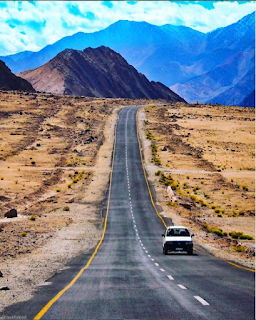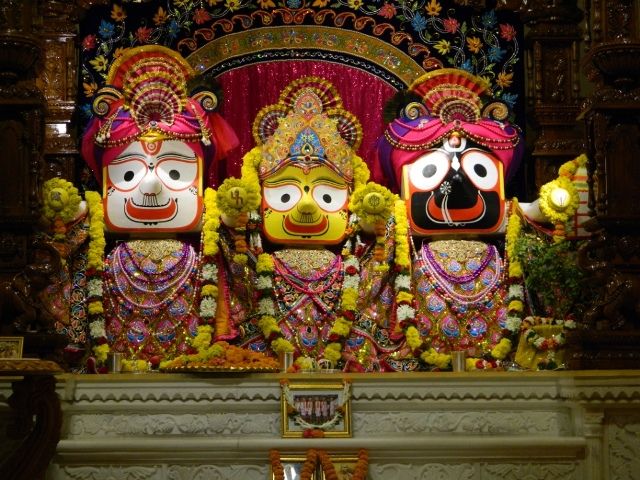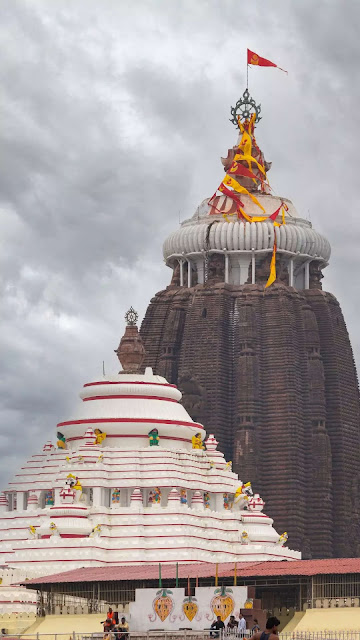Andhra Pradesh, a state in southern India, is known for its rich cultural heritage and diverse natural beauty. While it may not be particularly renowned for its lakes, there are several notable lakes in the state that attract tourists and locals alike. Here are some famous lakes in Andhra Pradesh:
1. Hussain Sagar Lake:
 |
| Hussain Sagar Lake |
Hussain Sagar Lake, located in the heart of Hyderabad, Telangana, is one of the largest artificial lakes in India, built during the Qutb Shahi dynasty. The lake has a rich history and serves as an important landmark and tourist attraction in the city.
History of Hussain Sagar Lake
- Construction: The lake was commissioned by Sultan Hussain Shah Wali, the ruler of the Qutb Shahi dynasty, in 1562. It was built to meet the drinking water needs of the city and to serve as a reservoir for irrigation purposes. The lake was named after the Sultan who commissioned its construction.
- Design: Hussain Sagar was designed and constructed by the engineer Malki, and it originally stretched over an area of 6.3 square kilometers. Over the years, it has become a symbol of Hyderabad's heritage.
- Significant Role: The lake played a key role in the city's water supply system and was later expanded and developed for recreational purposes.
Key Features
- Buddha Statue: One of the most iconic features of the lake is the Statue of Equality of Gautama Buddha, located on Buddha Island in the middle of the lake. This statue, erected in 1992, is one of the largest monolithic statues of Buddha in the world.
- Boating: Boating on the lake is a popular tourist activity, with several boat rides offered around the Buddha statue and along the scenic surroundings.
- Lumbini Park: A park located near the lake offering a peaceful setting, gardens, and cultural performances, enhancing the area’s appeal.
- City Landmark: Hussain Sagar is surrounded by some of the city's famous landmarks, including Tank Bund Road, Necklace Road, and NTR Gardens.
How to Reach Hussain Sagar Lake
-
By Air:
- The nearest airport is Rajiv Gandhi International Airport, located about 30 km from Hussain Sagar. From there, you can hire a taxi or use other transport services to reach the lake.
-
By Train:
- The lake is well-connected by rail, with the Hyderabad Railway Station (Nampally and Secunderabad) being approximately 5-10 km away. From the station, taxis or auto-rickshaws are available to take you to the lake.
-
By Road:
- Local Transport: Hussain Sagar is easily accessible via road from most parts of Hyderabad. The lake is well-connected by city buses, taxis, and auto-rickshaws.
- From Necklace Road: Necklace Road, which runs along the lake, is a popular route for travelers, offering a scenic drive with plenty of options for food and entertainment.
-
By Boat:
- You can also reach the Buddha Statue via boat rides that depart from Sanjeevaiah Park or Lumbini Park. Boat rides are available for tourists looking to explore the lake's beauty.
Best Time to Visit
- Winter (October to March): The weather is pleasant, making it ideal for visiting the lake and enjoying outdoor activities like boating and strolling along the promenade.
- Monsoon (June to September): While the lake looks picturesque during the monsoon season, it can get crowded, and boating might be limited during heavy rainfall.
- Summer (April to June): The weather is hot, but early mornings and evenings are good for a visit to the lake.
Hussain Sagar Lake is not just a historical site but also a vibrant part of Hyderabad's social and cultural life. Its scenic beauty, recreational facilities, and historical significance make it a must-visit for travelers to the city.
2. Kolleru Lake:
 |
| Kolleru Lake |
Kolleru Lake is one of the largest freshwater lakes in India, located between the Krishna and Godavari deltas in the West Godavari and Krishna districts of Andhra Pradesh. It is an ecologically significant and biodiversity-rich area, often described as a hotspot for migratory birds.
History and Significance
-
Formation and Size:
- Kolleru Lake was historically a natural lagoon formed by the Krishna and Godavari rivers. Over time, it became one of the largest freshwater lakes in India, with an area of over 250 square kilometers during monsoon.
- It has been a traditional fishing ground for locals and has played a crucial role in the agrarian economy of the region, especially for prawn farming.
-
Ecological Importance:
- The lake is an important wetland ecosystem, known for its rich biodiversity. It hosts a variety of bird species, including migratory birds such as painted storks, herons, and egrets. It is recognized as a Ramsar Site (Wetland of International Importance) due to its ecological value.
- Kolleru Wildlife Sanctuary, established in 1999, encompasses the lake and is home to a variety of aquatic and terrestrial species, including several endangered ones.
-
Decline and Conservation:
- In recent decades, the lake faced environmental challenges such as pollution, encroachments, and illegal drainage systems. However, various conservation measures have been implemented to restore its natural habitat, including efforts to regulate fishing and prevent industrial pollution.
How to Reach Kolleru Lake
-
By Air:
- The nearest airport to Kolleru Lake is Vijayawada Airport (around 40-50 km away), which is well-connected to major cities like Hyderabad, Chennai, and Bengaluru.
- Alternatively, Rajahmundry Airport is also an option, approximately 100 km from the lake.
-
By Train:
- Eluru is the nearest railway station, located about 25 km from Kolleru Lake. Eluru is connected to major cities like Vijayawada, Hyderabad, and Chennai.
- Vijayawada Railway Station (about 50 km away) is also well-connected and provides more frequent trains.
-
By Road:
- Kolleru Lake is accessible by road from Vijayawada (around 50 km) and Eluru (around 25 km).
- Regular buses, taxis, and private vehicles can be used to travel from these cities to the lake.
Attractions Around Kolleru Lake
- Kolleru Wildlife Sanctuary: A must-visit for bird watchers, the sanctuary offers opportunities to see migratory birds and native species in their natural habitat.
- Bird Watching: The lake attracts a wide variety of birds, especially during the winter season (November to February), making it a hotspot for birdwatching.
- Local Villages: Explore the surrounding villages to experience the traditional culture and farming practices, particularly prawn farming.
- Near-by Attractions:
- Rajahmundry and Vijayawada: Both cities have rich historical and cultural landmarks, such as Kanaka Durga Temple in Vijayawada and Dowleswaram Barrage in Rajahmundry.
Best Time to Visit
- Winter (November to February): The best time for bird watching and to experience the lake's serene beauty.
- Monsoon (June to September): The lake is at its fullest and most vibrant, but the weather can be unpredictable.
3. Pulicat Lake:
Pulicat Lake is the second-largest brackish water lake in India, located on the southeastern coast, primarily in the Chittoor District of Andhra Pradesh and part of Tamil Nadu. It lies near the Bay of Bengal and is known for its rich biodiversity and as an important destination for migratory birds.
History of Pulikat Lake:
- Ecological Significance: Pulikat Lake is a coastal lagoon, formed as a result of sandbars and shallow waters along the coast. It is believed to have formed due to natural coastal processes, with the lake's size and salinity varying over time.
- Historical Importance: The region around Pulikat Lake has been historically significant, with the nearby Pulicat town serving as a thriving port city during the Dutch colonial period in India. The Dutch East India Company established a trading post here in the 17th century, and Pulicat was an important center for trade, particularly in textiles.
- Biodiversity and Conservation: The lake is home to several species of fish, birds, and aquatic plants. It provides essential breeding grounds for fish and other marine life. The region is also a crucial stopover for migratory birds along the East Asia-Australasia Flyway. The Pulicat Lake Bird Sanctuary, established in 1976, helps protect the diverse wildlife in the area.
How to Reach Pulikat Lake:
- By Air:
- The nearest airport is Chennai International Airport, which is about 60 km away from the lake. From the airport, you can hire a taxi or take a bus to reach the lake.
- By Train:
- Pulicat Railway Station (on the Chennai–Kolkata route) is the nearest railway station, though it has limited services. Alternatively, you can take a train to Chennai and travel by road to Pulikat.
- By Road:
- From Chennai: Pulikat Lake is about 60 km from Chennai, and can be accessed via the Chennai-Baypore Road or the East Coast Road (ECR).
- From Tirupati: The lake is about 120 km from Tirupati, and can be reached by taking a road through Sullurpeta.
Best Time to Visit:
- The best time to visit Pulikat Lake is during the winter months (November to February) when migratory birds flock to the area. This is also when the weather is more pleasant for sightseeing and birdwatching.
Attractions:
- Pulicat Lake Bird Sanctuary: A haven for birdwatchers, especially during the migratory season. The sanctuary is home to birds like flamingos, pelicans, and herons.
- Pulicat Town: The historical town with colonial-era architecture, including the Dutch cemetery and remnants of the old Dutch fort.
- Boating and Photography: You can enjoy boat rides on the lake for a closer view of its natural beauty and the birds.
Pulikat Lake is a serene, ecological treasure offering both natural beauty and a peek into India’s colonial history, making it a great destination for nature lovers and history enthusiasts.
4. Kondakarla Ava:
Kondakarla Lake is a serene freshwater lake located in the Visakhapatnam district of Andhra Pradesh, India. It is known for its natural beauty, biodiversity, and tranquil atmosphere, making it a popular spot for nature lovers and tourists.
History of Kondakarla Lake:
- Ecological Importance: Kondakarla Lake is a wetland that plays a significant role in the local ecosystem. It is surrounded by dense forests and is home to various species of birds, making it an important site for birdwatching.
- Formation: The lake is believed to have been formed naturally, though historical records do not provide much detail on its origins. It has been an important part of the local ecosystem and a resource for nearby villages for centuries.
- Cultural Significance: The lake and its surrounding area are not only ecologically valuable but also hold cultural importance for the local communities, who have used its water for agricultural and other purposes.
How to Reach Kondakarla Lake:
-
By Road:
- Kondakarla Lake is about 35 km from Visakhapatnam and can be easily reached by car or bus.
- The lake is located near the village of Kondakarla, which is accessible via the National Highway 16 (NH16) that connects Visakhapatnam to Chennai. The village can be reached via local roads from the highway.
-
By Train:
- Visakhapatnam Railway Station is the nearest major railway station. From there, you can take a taxi or bus to reach the lake.
-
By Air:
- The nearest airport is Visakhapatnam International Airport (approximately 35 km from the lake). From the airport, taxis and buses are available to reach the lake.
Things to Do Around Kondakarla Lake:
- Birdwatching: The lake is home to various migratory and local birds, making it a haven for birdwatchers.
- Boating: The lake offers boating opportunities, allowing visitors to enjoy the peaceful surroundings and scenic views.
- Photography: The lush green landscape and the clear waters of the lake offer great photo opportunities.
Kondakarla Lake is a perfect destination for those looking for a peaceful retreat amidst nature, away from the hustle and bustle of city life.
5. Ramappa Lake:
Ramappa Lake is located near the Ramappa Temple in the Mulugu district of Telangana, India. The lake and its surrounding area are known for their natural beauty, and the site has historical significance related to the Kakatiya dynasty, which ruled the region in the 12th and 13th centuries.
History of Ramappa Lake
- Origin: The lake was constructed by Recharla Rudra, a general under the reign of Kakatiya King Rudra Deva, during the 12th century. It was built to supply water to the nearby Ramappa Temple (also known as Ramalingeswara Temple), which is renowned for its intricate architecture and sculptures.
- Significance: The lake is an important part of the Kakatiya-era irrigation system, highlighting the advanced engineering skills of the time. The Ramappa Temple and the lake are part of the UNESCO World Heritage Site of Kakatiya Rudreshwara (Ramappa) Temple, designated in 2021.
- Engineering Marvel: The lake's construction demonstrates the ingenuity of the Kakatiya engineers in utilizing natural resources and creating sustainable water management systems. The lake has a picturesque setting with lush greenery and serene surroundings.
How to Reach Ramappa Lake
-
By Road:
- From Hyderabad: The lake is approximately 200 kilometers from Hyderabad, which can be reached via NH 163. The journey takes around 4-5 hours by car.
- From Warangal: The lake is about 65 kilometers from Warangal and can be reached in 1.5 to 2 hours by car.
-
By Train:
- The nearest railway station is Warangal, which is well-connected to major cities in Telangana and other states. From Warangal, you can hire a taxi or use local transport to reach the lake.
-
By Air:
- The nearest airport is Rajiv Gandhi International Airport in Hyderabad, about 200 kilometers away. From there, you can take a taxi or rent a car to reach Ramappa Lake.
Best Time to Visit:
- The best time to visit Ramappa Lake is during the winter months (November to February), as the weather is pleasant and ideal for sightseeing and exploring the area. Summer and monsoon seasons can be hot and wet, respectively, making travel less comfortable.
Ramappa Lake, with its historical significance and picturesque surroundings, is a perfect destination for history enthusiasts, nature lovers, and those exploring the cultural heritage of the Kakatiya dynasty.























